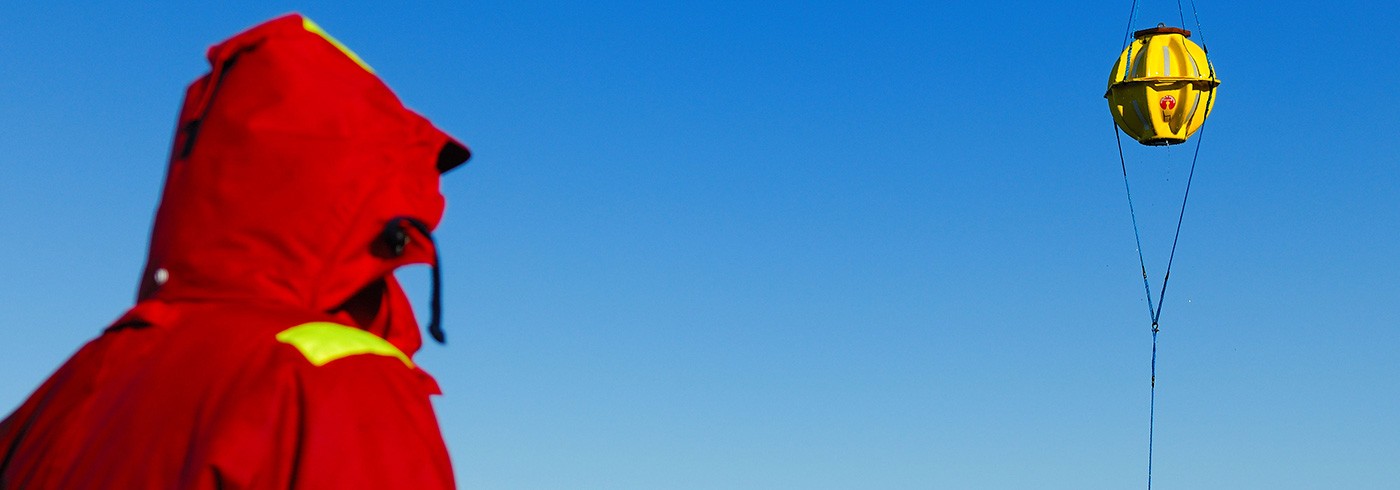The Arctic Gakkel Vents (AGAVE) Expedition July 1 – August 10, 2007
1 July 2007 - 10 August 2007The AGAVE expedition had two sets of complimentary objectives. The scientific objective was to study the geological, chemical, and biological characteristics of volcanic activity and hydrothermal venting on the Gakkel Ridge. The engineering objective was to develop new technologies for deep-sea research in ice-covered oceans. The expedition was an International Polar Year (IPY) collaboration between scientists from the USA, Sweden, Germany and Japan. The Gakkel Ridge in the Eastern Arctic Basin is the ultra-slow spreading end-member in the global mid-ocean ridge (MOR) system. The North American and Eurasian plates diverge at (full) rates of 3–7 mm/year along the Gakkel Ridge, nearly two orders of magnitude slower than the fast spreading end-member (southern East Pacific Rise). This ultra-slow divergence accounts for the specific geologic nature of the ridge. Whereas a relatively uniform layer of crust is accreted at most MORs, volcanic activity along the Gakkel Ridge is focused into discrete areas. As a result, long stretches of the ridge experience no volcanic activity at all, with extension accommodated via the exhumation of primitive mantle rocks, while other sections represent massive volcanic centres. The impact of these variations on hydrothermal processes is poorly understood, but preliminary evidence suggests there may be profound differences between hydrothermal discharge at ultra-slow ridges compared to the rest of the MOR system, both in terms of fluid chemistry and the distribution of vent fields.
The biological organisms that inhabit deepsea vent fields have a biogeographic distribution along the global MOR system. For example, tubeworms are endemic to MORs in the Pacific Ocean, while shrimp are endemic to the Atlantic Ocean. Until now we have not had the tools to discover what kind of organisms inhabit vent fields in the Arctic Ocean, which is of particular interest because it is hydrographically isolated from the rest of the world’s oceans.
In order to address these issues, the team behind the AGAVE expedition developed new technologies to enable deep-sea research in the ice-covered Arctic Ocean. The ice cover inhibits or precludes many of the standard oceanographic and deep-sea technologies employed to find and study hydrothermal systems in the open ocean. In particular, remotely operated vehicle (ROV) operations are not presently feasible in ice-covered bodies of water, and submersible operations are considered too risky, owing to the difficulties of recovery through the ice. The motivation to develop novel under-ice survey capabilities is not limited to missions on Earth. The search for life on other planets includes the possibility of volcanically hosted vent fields beneath the ice-covered ocean of Europa, a moon of Jupiter. The search for vent fields under the Arctic ice cap on Earth thus presents a technical analogy for similar missions on Europa. To solve these problems the AGAVE expedition developed two new deep-sea robots (a.k.a. AUVs – autonomous underwater vehicles), called PUMA and JAGUAR, which can be deployed and recovered from an icebreaker within the ice pack. The AUVs dived to depths of 4 200 m and performed a variety of missions, including plume mapping and high-resolution bathymetric mapping of the Gakkel Ridge. Furthermore, the AUVs allowed scientists to pinpoint the location where hydrothermal fluids were discharging from the deep seafloor.

The CAMPER wireline vehicle being lowered over the side during a test dive off Bear Island. Photo: Björn Eriksson.
Sample acquisition is a key scientific objective for hydrothermal research that is not presently feasible with AUVs, and this necessitated the development of the camera and sampling platform (CAMPER). The CAMPER was attached to the icebreaker via an armoured, fibre-optic cable that allowed scientists to ‘‘fly’’ the vehicle just above the rocky seafloor, and to acquire real-time imagery and samples. The CAMPER imagery was fed into the Oden’s computer network, allowing scientists to watch the dives from anywhere on the ship, including ‘‘ TV dinners’’ in the galley, which were quite popular.
The AGAVE expedition made a number of exciting discoveries on the Gakkel Ridge, and one of the most surprising was the fact that the axial valley at the 85°E segment is blanketed in pyroclastic deposits – the largest unconsolidated deposits ever found on the seafloor (picture 4). These deposits are caused by explosive volcanic eruptions, which many scientists had assumed were impossible in the deep ocean because of the great pressures at such depths. The AGAVE observations turn this idea upside down, and demonstrate that volcanic activity at the 85°E site has been accompanied by the catastrophic discharge of magmatic volatiles. These pyroclastic deposits are being analyzed to determine their age and composition in order to better understand this surprising result. The deposits were found around a previously unknown chain of volcanoes, which were named the Asgard Chain – Oden, Thor, and Loke, in honor of the outstanding scientific support provided by the officers and crew of IB Oden.




